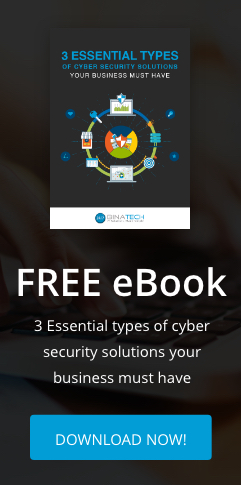As the new decade starts, cybercriminals are already preparing to launch dangerous cyberattacks on individuals and businesses. Cyberthreats such as ransomware, phishing, and cryptojacking attacks have been successful over the past few years, and this year’s threats are expected to be more difficult to stop.
Let’s take a look at the top cyberthreats your business needs protection from:
#1. Social engineering attacks
Social engineering involves deceiving users into divulging confidential or personal information for fraudulent purposes. And this year, social engineering attacks are expected to become more sophisticated.
Phishing is one of the most dangerous forms of social engineering in which an attacker sends out a fraudulent email, text message, or voice call to trick a user into giving out confidential information such as work credentials, and credit card details. According to the 2019 Verizon Data Breach Investigations Report (DBIR), phishing is the number one cause of data breaches.
Phishing kits, which are sets of tools used to launch a phishing attack, are also growing in popularity because they are easily available on the dark web. People also continue to use weak passwords such as “12345,” “test1,” “password,” and “qwerty,” so cybercriminals can easily gain access to users’ systems.
Mitigate phishing attacks by encouraging employees to utilize multifactor authentication (MFA), which uses more than one method of verifying a user’s identity via a one-time smartphone code or a fingerprint or facial scan. Enforce IT policies that restrict users’ system privileges to only what they need to do their tasks.
#2. Ransomware
Ransomware attacks are set to become more dangerous this year. Cybercriminals are looking to boost their profits by launching targeted rather than mass attacks.
Before, typical ransomware simply encrypted a victim’s files and demanded ransom in exchange for unlocking the data. Now, hackers are coming for highly valuable data like intellectual property (IP).
We will soon see ransomware variants going after high-value information such as prototypes, schematics, and designs. Once the victim has been denied access to their confidential data, criminals can sell the information to competitors on the black market.
Investing in effective security programs such as firewalls can help protect your system from malware. Keep your antivirus and anti-malware updated as well so ransomware can immediately be detected and deleted before it can start encrypting files. Also, make sure to create external backups of your files on external hard drives or a cloud storage service for easy recovery in case of a ransomware attack.
#3. Insider threats
Insider threats pose a significant risk to organizations. Employees may accidentally have their accounts compromised or download malware that can damage your business. There are also insiders who may try to abuse their access privileges for personal gain or revenge.
According to industry studies, 60% of data breaches in 2020 could involve insiders, compared to only 50% in 2019. This will lead to more companies finally taking insider threats more seriously, and allocating bigger budgets to protecting their IP.
Minimize insider attacks by making sure your employees can access only the programs and files needed to do their job. So even if an employee’s account gets compromised, the damage will be limited and won’t affect other parts of your system.
#4. Business email compromise (BEC)
BEC is a scam targeting businesses working with suppliers and/or organizations that regularly perform wire transfer payments. It basically compromises or fakes official business accounts to conduct unauthorized fund transfers.
According to the FBI’s Internet Crime Complaint Center (IC3), BEC scams are growing every year, recording a 100% increase in identified global loss between May 2018 and July 2019. A total of 166,349 incidents were also recorded worldwide between June 2019 and July 2019, equivalent to a total revenue loss of $26 billion. The scam is expected to grow even more dangerous this year.
BEC scams often impersonate high-level executives or business partners, and create a sense of authority or urgency to bypass normal procedures. For instance, a cybercriminal can pose as the CEO of a certain company by hijacking the real CEO’s account or through spoofing their email address.
They will then ask someone in the finance department to wire them a certain amount of money. Since the request seems to be coming from a top-level executive, some employees will easily comply with the request without double-checking first. Some cybercriminals might even ask for confidential information, which they will use to sabotage the organization.
To mitigate the chances of BEC, teach your employees to always double-check a sender’s email address. Personally verify the request as well. Avoid oversharing personal details on social media, because this makes it easy for cybercriminals to gather confidential information of other people and pretend to be them.
Your business needs the most effective and proactive IT solutions. When you sign up with Binatech, we will customize an IT plan that will not only keep your business protected from threats 24/7/365, but will also help you thrive in the long run. If you’re in the Hamilton, Mississauga, or Buffalo area, we can definitely help your business grow. Schedule your FREE network assessment today.



